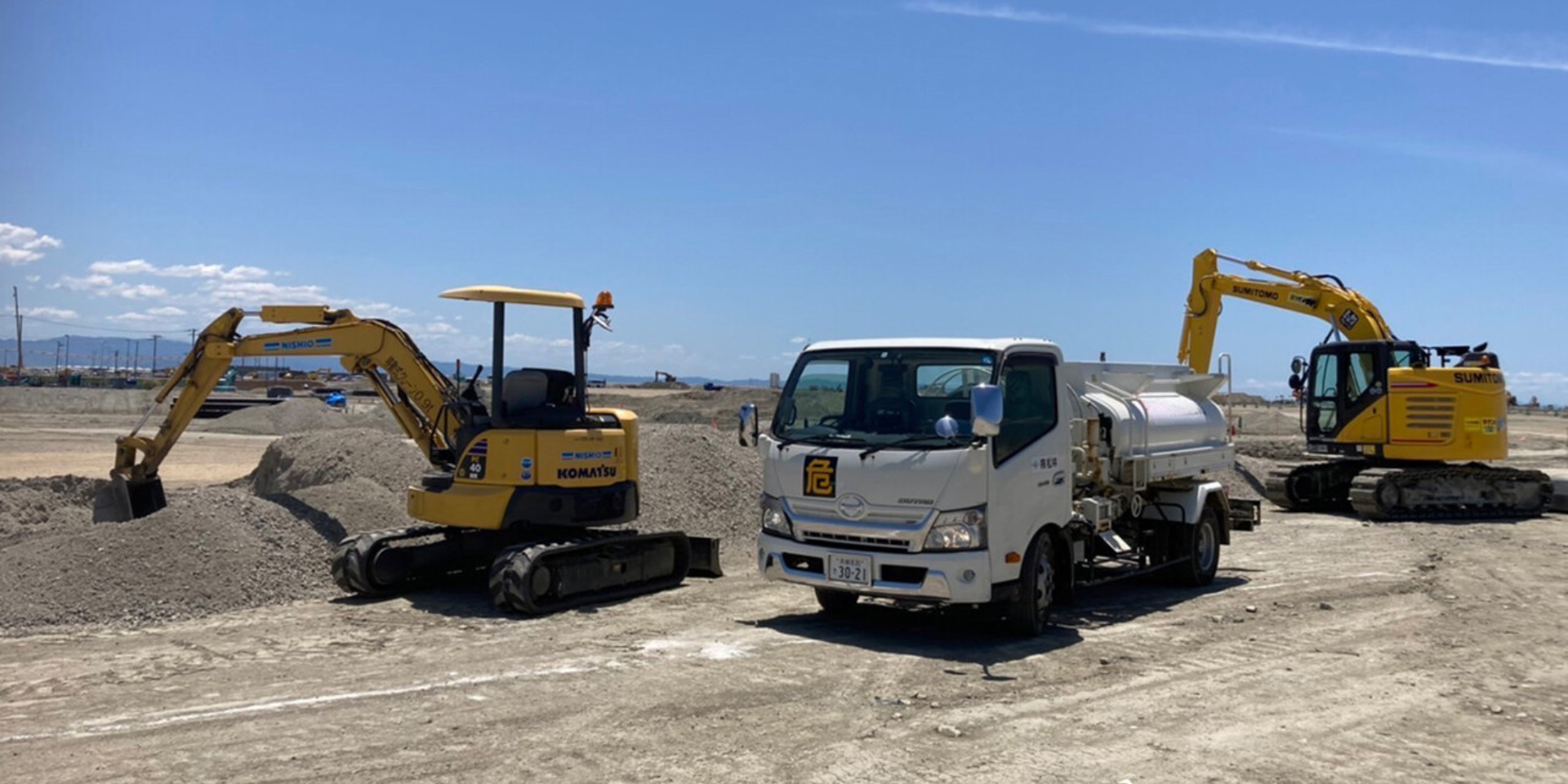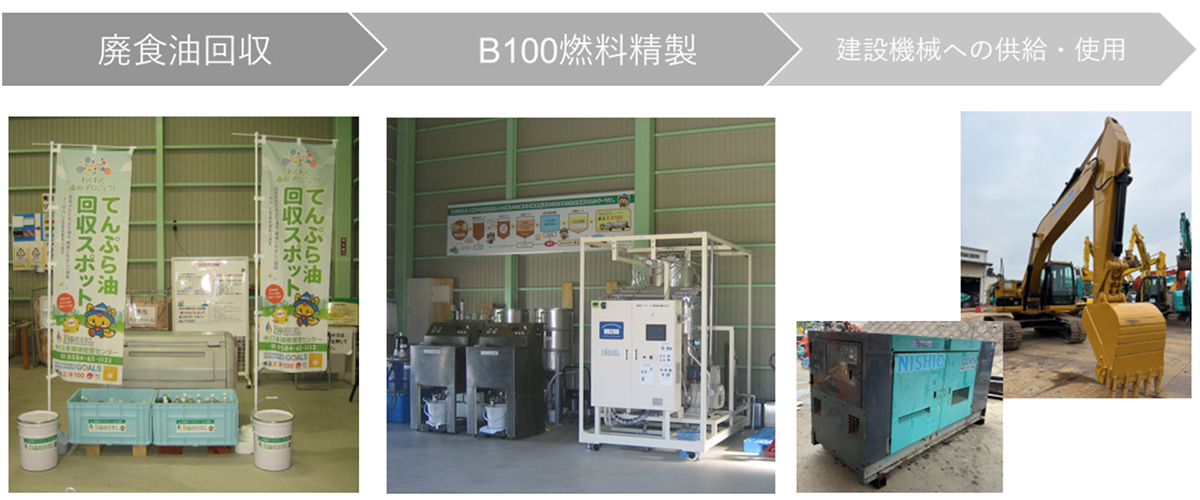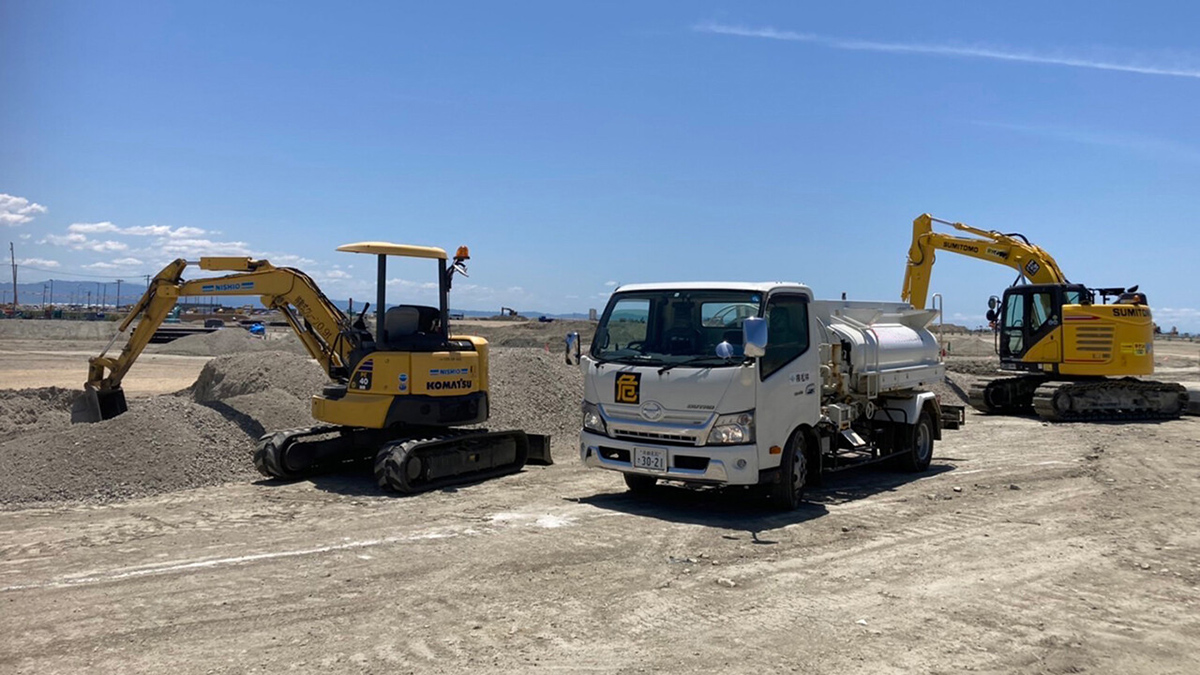Please note that some content is only available in Japanese

Utilization of Biodiesel Fuel
Use of biodiesel fuel at construction sites to reduce CO2 emissions from diesel oil
POINT
-
Building a resource recycling process and realizing zero-carbon construction

Resource recycling process flow
Obayashi is promoting to replace diesel fuel, which accounts for about 70% of CO2 emissions on construction sites, with biodiesel fuel refined by a contracted manufacturer from used cooking oil collected from households and other sources (including oil from its own cafeterias). Using 100% biodiesel fuel makes it possible to eliminate CO2 emissions during machinery operation.
This initiative aims to establish a resource recycling process from fuel procurement to on-site use, while also promoting the adoption of alternative fuels to reduce CO2 emissions from diesel sources. -
Verifying proper operation of construction machinery using biodiesel fuel

Construction machinery using B100 fuel for Expo 2025 Osaka, Kansai
A demonstration was conducted using biodiesel fuel to power construction machinery at the site of the Expo 2025 Osaka, Kansai, Japan. Prior to that, from February to March 2023, Obayashi jointly carried out a demonstration with East Japan Railway Company at the construction site of Block 4 of the Shinagawa Development Project (Phase I) in Minato City, Tokyo, using 20% biodiesel fuel (B20) in select construction equipment, confirming normal operation. Through these demonstrations, Obayashi aims to expand the use of B100 fuel (100% biodiesel), establish a resource recycling process, further enhance CO2 reduction, and promote the use of locally sourced renewable energy.
-
Demonstration of next-generation biofuel “renewable diesel”

Construction equipment using biofuel
A demonstration was conducted using renewable diesel (RD)—a biofuel with high CO2 reduction potential—as an alternative to diesel oil for construction machinery and generators used at construction sites. RD is made from plant-based waste oils such as used cooking oil. Although it emits CO2 when burned, the plants used as raw materials absorb CO2 during growth, making it a carbon-neutral fuel. Because RD can be used with existing distribution infrastructure and internal combustion engines, it is expected to see broader adoption in both the transportation and construction industries.
